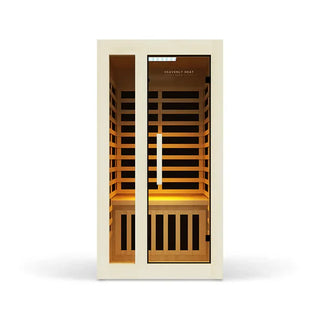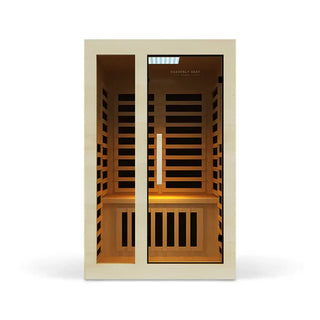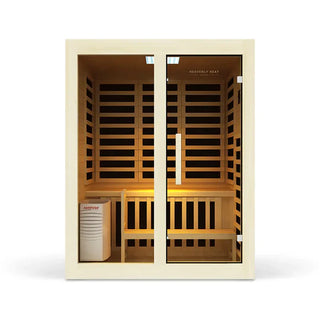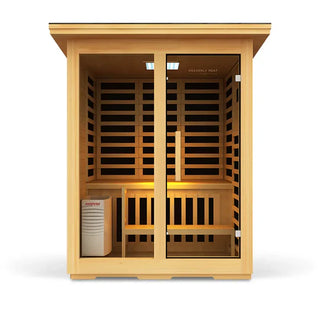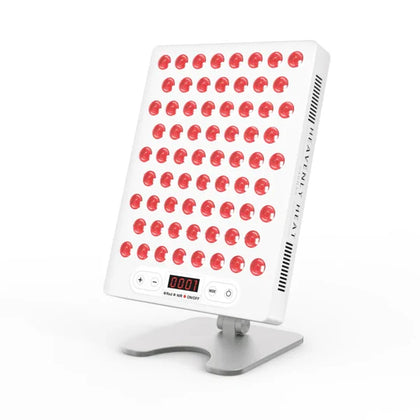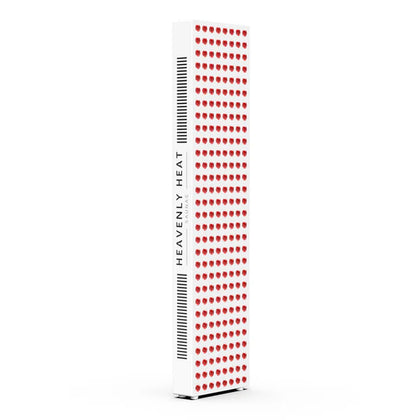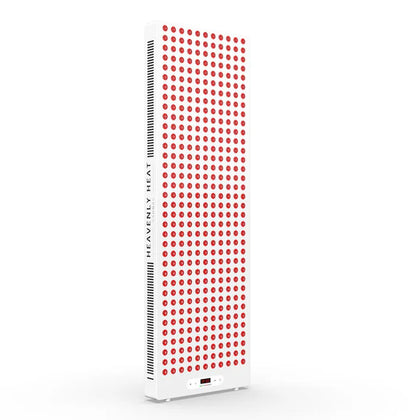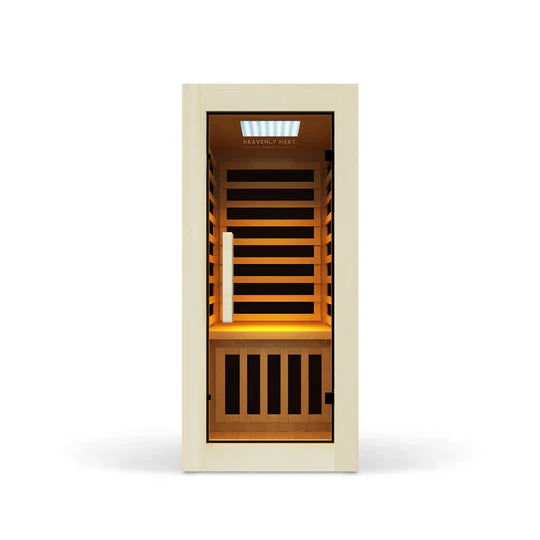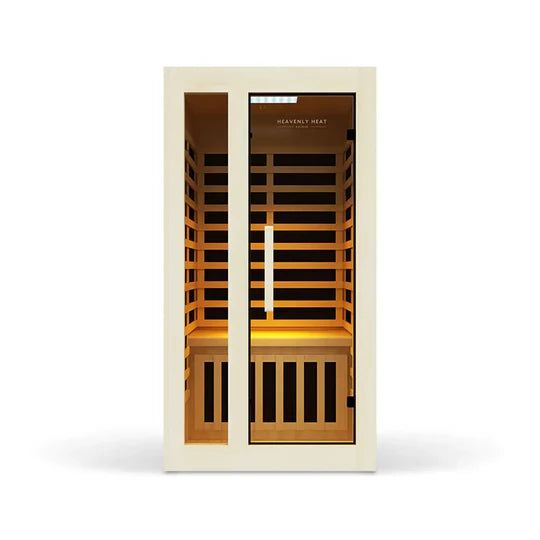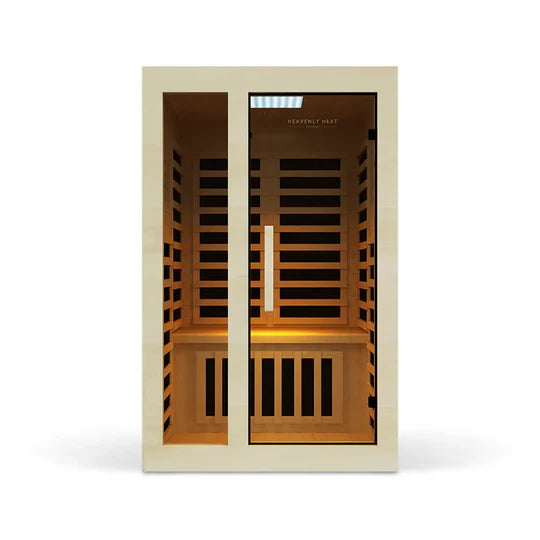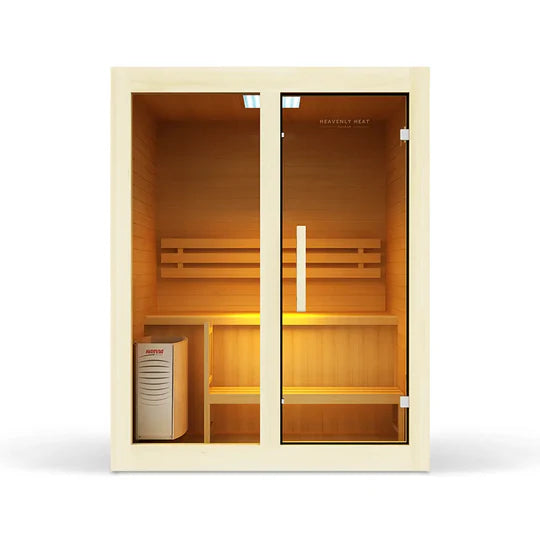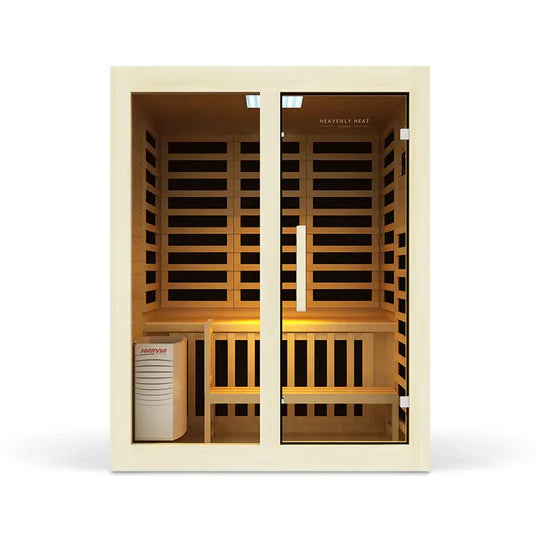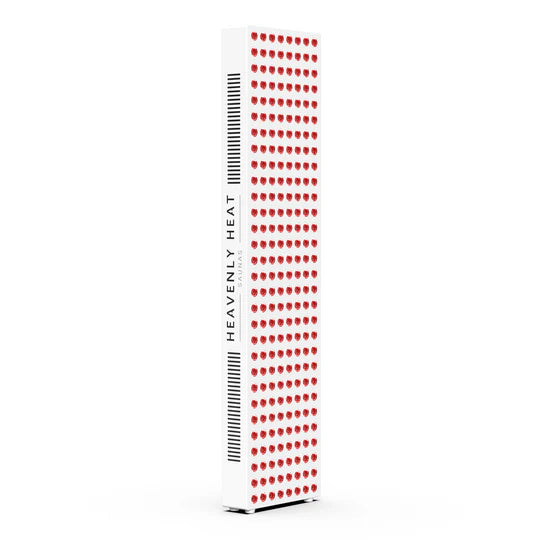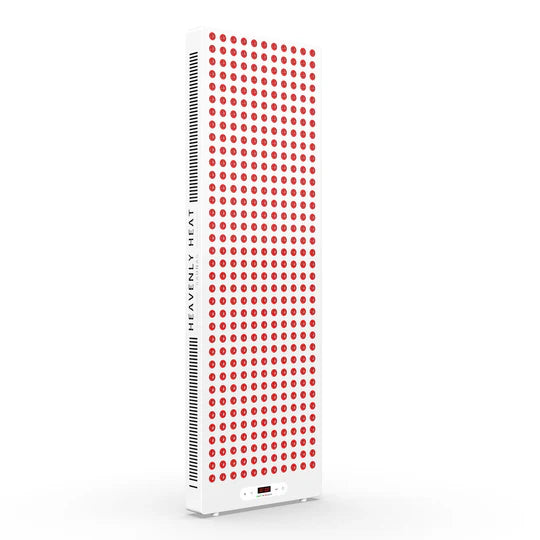Dry Brush Before or After Sauna: Best Practices for Skin Health
Are you confused about whether to dry brush before or after your sauna? This common mistake can lead to skin irritation and missed benefits like improved circulation and smoother skin. Don’t worry – we’ve got the best practices covered. Learn when to dry brush for maximum skin health and get the glowing, rejuvenated skin you deserve.
Key Takeaways
-
Dry brushing before a sauna enhances circulation and opens pores, making it easier for your skin to sweat and detoxify.
-
Choose a dry brush with natural bristles for better exfoliation and gentler results.
-
Always brush in the direction of your heart to boost circulation and lymphatic flow.
-
Rinse off after a sauna session to remove sweat, toxins, and dead skin cells for better skin health.
-
Moisturize right after dry brushing to lock in hydration and keep your skin smooth.
What Is Dry Brushing and How Does It Work?
Dry brushing is a simple technique where you use a dry, stiff-bristled brush to sweep over your skin. It gently exfoliates by removing dead skin cells and making your skin feel smooth.
More than that, it boosts circulation by helping your blood flow better and giving your skin a natural glow.
As you brush, you also stimulate your lymphatic system, which helps flush out toxins and reduce puffiness.
Some people wonder if dry brushing is the same as exfoliation. It is, but it also does more by improving blood flow and detoxification. With regular use, your skin looks fresher and feels healthier.
How to Pick the Best Dry Brush for Your Skin
Consider the Bristle Type
When selecting a dry brush, the bristle type plays a key role in how it feels on your skin. If you have sensitive skin, choose softer, natural bristles to avoid irritation.
Synthetic bristles are often firmer and can be harsher on delicate skin, while natural bristles are gentler and may provide better exfoliation.
A soft bristle brush works best for those with acne-prone skin since it reduces the risk of irritation. To find the right bristle stiffness, try brushing lightly on your forearm first, adjusting until you find the perfect balance.
Choose the Right Bristle Firmness for Your Skin Type
The firmness of your dry brush’s bristles should match your skin type. For sensitive skin, soft bristles are a must, as firm ones can lead to redness or discomfort.
On the other hand, firm bristles are perfect for tougher skin and areas with thicker tissue, like your legs or feet.
If you're unsure, start with medium firmness and see how your skin responds. Over time, you’ll notice whether the brush feels too harsh or if a firmer one is needed for deeper exfoliation.
Pick the Best Handle Length for Easy Use
When choosing a dry brush, the handle length affects how comfortably you can use it. A longer handle is perfect for hard-to-reach areas like your back, making the brushing experience smoother.
Shorter handles are great for precision, like targeting smaller areas such as your arms and legs. A handle that’s too long or too short can cause strain or awkward positioning.
Test different lengths by imagining where you’ll be brushing and how easily you can reach those spots. Comfort is key, so opt for a length that feels natural in your hand and allows smooth strokes.
Look for a Brush Shape That Fits Your Needs
The shape of the dry brush influences its effectiveness. Round brushes are often used for gentle, circular motions, while oval shapes are ideal for larger surface areas.
For those with limited mobility or flexibility, a long-handled oval brush can be a game changer, offering ease of reach for the back. When selecting a shape, consider both your skin type and the areas you’ll be targeting.
Opt for High-Quality Materials for Durability
A high-quality dry brush is a worthy investment for your skin. Brushes made from natural materials like wood or bamboo tend to be more durable than plastic alternatives.
While plastic can break down over time, natural materials offer long-lasting sturdiness and often have a smoother feel. Look for brushes made with eco-friendly and sturdy materials for better durability.
Check for a Comfortable Grip for Better Control
A comfortable grip makes dry brushing easier and more effective. If your brush handle is slippery or awkward, it can reduce control and cause strain during use.
Opt for a handle with a non-slip grip to prevent accidents and ensure smooth, even strokes. Soft-touch materials or ergonomic designs can improve the grip, providing a more relaxed experience.
Decide Between a Handheld or Long-Handled Brush
Handheld and long-handled dry brushes each offer distinct benefits, depending on your needs. A handheld brush provides precision and control, perfect for smaller areas like your arms or face.
However, if you struggle to reach your back or other hard-to-reach places, a long-handled brush will make the process easier.
Long handles also reduce strain on your shoulders and arms, especially for people with mobility issues.
Is Dry Brushing Safe for All Skin Types?
Dry brushing is not the best choice for everyone. If you have sensitive skin, brushing too hard can cause redness and irritation, so be gentle.
Thin skin is delicate, and if you bruise easily, dry brushing may not be a good idea. For dry skin, it can help remove dead skin cells, but using a soft brush and applying moisturizer after is important.
If you have acne-prone skin, brushing too harshly can spread bacteria and make breakouts worse. Choosing the right brush is also important. Stiff bristles can damage your skin, so pick one that suits your skin type.
Are There Any Risks to Dry Brushing?
Skin Irritation and Redness
Dry brushing is meant to refresh your skin, but if you aren’t careful, it can cause irritation. Overbrushing or applying too much pressure may leave your skin red and inflamed.
It’s normal for your skin to appear slightly pink after dry brushing, but if the redness lasts longer or feels uncomfortable, it could indicate irritation.
Sunburned skin is more vulnerable, so it’s best to skip dry brushing when your skin is sunburned.
Over-Exfoliation and Skin Damage
Exfoliating is key to healthy skin, but too much of it can cause more harm than good. Over-exfoliating with dry brushing strips away natural oils, weakening your skin’s barrier.
This can lead to redness, sensitivity, and dryness. If you notice your skin feels tight or looks flaky after dry brushing, it might be a sign of over-exfoliation.
To avoid this, stick to a routine that doesn’t exceed two or three times per week, and listen to your skin’s needs.
Risk of Spreading Bacteria and Infections
Dry brushing can potentially spread bacteria if you aren’t using a clean brush. Bacteria can transfer from your skin to the bristles, especially if you’re brushing over areas with cuts or blemishes.
A dirty brush increases the risk of bacterial and fungal infections. To reduce this risk, always disinfect your brush after use and avoid sharing it with others.
Not Suitable for Skin Conditions Like Eczema or Psoriasis
For those with skin conditions like eczema or psoriasis, dry brushing may cause more harm than good.
The friction from the brush can irritate flare-ups, causing discomfort and potentially making the condition worse.
Psoriasis, in particular, may worsen with the harsh scraping of dry brushing, leading to more visible plaques and discomfort.
Microtears Leading to Inflammation
One of the hidden risks of dry brushing is the potential for microtears in the skin. These tiny tears can occur if you use excessive pressure or brush too vigorously, leading to inflammation and even infections.
If you experience redness or sensitivity after dry brushing, it might be a sign that microtears have occurred. To prevent this, use gentle strokes and avoid brushing over sensitive areas.
Potential Allergic Reactions to Brush Materials
The bristles in dry brushes are typically made of synthetic or natural materials. Some people may have sensitivities to certain types of bristles, leading to allergic reactions like redness, hives, or rashes.
Synthetic bristles can sometimes irritate sensitive skin more than natural ones, especially if the brush is made with harsh materials.
Worsening of Existing Acne or Breakouts
If you struggle with acne, dry brushing might not be the best option for you. The friction can irritate existing breakouts and lead to more inflammation.
Dry brushing can also spread oils and bacteria across your skin, potentially clogging pores and causing new breakouts.
Should You Dry Brush Before or After Using a Sauna?
Dry brushing before a sauna is the best choice for most people. It removes dead skin cells, boosts circulation, and helps open pores, making it easier for your skin to sweat and detoxify.
If you dry brush after a sauna, it can still help remove sweat and toxins, but your skin may be more sensitive.
Exfoliation works best before heat exposure, so brushing beforehand gives better results. Showering between dry brushing and sauna use isn’t necessary, but rinsing off after the sauna helps wash away loosened debris. For the best skin benefits, dry brush before your sauna and shower afterward.
How to Add Dry Brushing to Your Sauna Routine?
Start with Dry Brushing Before Entering the Sauna
Dry brushing before entering the sauna can elevate your sauna experience and improve skin health. Dry brushing involves using a brush to exfoliate the skin, stimulating circulation and removing dead skin cells.
Doing it before the sauna enhances the skin’s ability to absorb heat, allowing you to sweat more efficiently.
Choose the Right Brush for Effective Results
Selecting the right dry brush is crucial to maximize benefits. A brush with natural bristles, like boar or sisal, tends to be more effective than synthetic options.
Natural bristles are gentler on the skin and work better for exfoliation. For your sauna routine, a medium to firm brush is ideal for exfoliation without irritation.
Use Proper Brushing Techniques for Maximum Benefits
To get the best results from dry brushing, proper technique is key. Always brush in the direction of your heart to enhance circulation and lymphatic flow. Apply gentle pressure, as brushing too hard can irritate the skin. A few minutes of brushing is sufficient, but be mindful not to overdo it.
Follow a Consistent Brushing Pattern
Consistency is essential for the full benefits of dry brushing. A regular routine ensures that your skin reaps the rewards of increased circulation and smoother texture.
To create a consistent brushing habit, make it part of your pre-sauna ritual. You don’t need to change your technique whether you dry brush before or after your sauna session.
Hydrate Before and After Brushing
Hydration plays a vital role in maximizing the effects of both dry brushing and sauna use. Drinking water before and after helps your body flush out toxins and supports healthy skin. It also helps to replenish moisture lost during the sauna session.
Enhance Circulation with Sauna Heat Post-Brushing
Sauna heat can significantly enhance the benefits of dry brushing by boosting circulation and relaxing muscles.
After dry brushing, stepping into a sauna encourages blood flow, which supports the body’s natural detoxification processes.
The heat from the sauna opens pores and allows toxins to be expelled more effectively. Combining dry brushing with sauna heat improves skin tone, reduces muscle tension, and boosts overall circulation.
It’s the perfect combination for those seeking better skin health, enhanced blood flow, and a greater sense of relaxation. This dual therapy not only improves circulation but also promotes a sense of overall wellness.
Follow Up with a Rinse or Shower After Sauna
After a sauna session, rinsing off is essential for skin health. Sweating during the sauna opens pores, and a shower removes sweat, dead skin cells, and toxins released during the session.
A warm rinse is ideal to soothe your muscles, relax your body, and cleanse the skin effectively. For even better results, rinse with cold water after your warm shower to tighten pores and refresh your skin.
The post-sauna rinse also helps hydrate the skin, restoring moisture that may have been lost during the sweating process. Rinsing not only cleanses but leaves your skin feeling refreshed and revitalized.
Should You Shower After Dry Brushing?
After dry brushing, showering is highly recommended for the best results. If you don’t shower, dead skin cells and impurities may remain on your skin, which can lead to irritation or clogged pores.
Showering after dry brushing helps remove these dead cells, leaving your skin feeling smoother and fresher.
It also helps to prevent irritation, especially if you have sensitive skin. Ideally, you should shower soon after dry brushing, within 10-15 minutes, to maximize the benefits.
The warm water can further open pores, promoting better skin health. So, while it’s not absolutely necessary, showering after dry brushing definitely enhances the experience.
Should You Apply Moisturizer After Dry Brushing?
After dry brushing, moisturizing is crucial to restore hydration and keep your skin soft and smooth. Applying moisturizer helps lock in the benefits of exfoliation, ensuring that your skin feels nourished and refreshed.
It’s best to moisturize immediately after dry brushing, as your pores are open, allowing the moisturizer to deeply absorb.
If you skip this step, your skin can feel dry or tight, and the exfoliating effects of dry brushing might not be fully realized.
Moisturizing also enhances the skin’s elasticity and helps maintain a healthy, glowing appearance. By moisturizing right after, you maximize the skin benefits and boost hydration.



